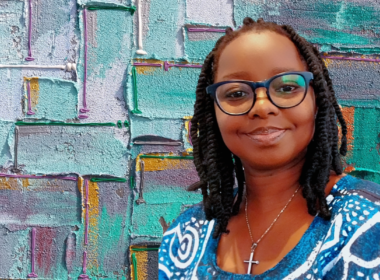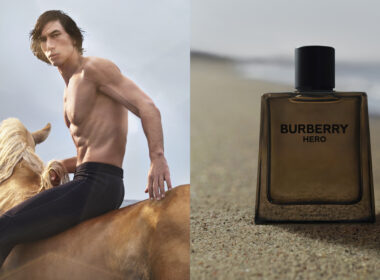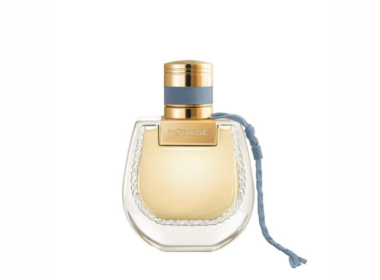Aniko Balazs has been redefining what it means to create clothing that isn’t just worn but lived in. Eternal by Aniko Collection provides a unique concept in fashion: items that adapt to the wearer, allowing each woman to express her unique style through a single garment. In this exclusive conversation, she shares the inspiration behind her groundbreaking designs and how she’s merging art, sustainability, and intelligence to leave an indelible mark on the industry.
Aniko Balazs: A few years ago, I embarked on a trip with the intention of travelling light. My destination was Paris, where I planned to buy fabric for business while also enjoying time with friends. Since Paris feels like home to me, much like Vienna does—having studied fashion there—I knew I needed to be both stylish and practical. However, I didn’t want to carry too many things. I wanted something versatile, something that could easily transform into different looks for different occasions.
That’s when the idea for the Eternal Collection started to take shape. I drew on my knowledge of design techniques and began thinking about how I could create pieces that would be both functional and stylish. Initially, I designed the collection to meet my own needs, but soon I realized its potential to help others as well. When I first wore one of the pieces, it received an overwhelmingly positive response—my friends and business partners were amazed.
The collection is unique because it offers multiple styles within a single piece, designed to fit a universal size range. For instance, the medium size can fit those who wear between sizes 36 and 42. We also plan to develop larger sizes to accommodate everyone. These designs continue to open up new possibilities—they cater to every woman, every body type, and every culture. The key to the Eternal Collection is its adaptability; it allows each woman to express her own style.
FAB: How do you think the clothes we wear affect our emotions and our state of mind?
Aniko Balazs: It affects us a lot, of course. Fashion is a language; fashion is style and style is intelligence merged with expression. If you look at my Instagram, I wrote “Fashion is Art”. “Style is Intelligence”. And “Clothing without these two is just cloth without any interest!”
One of my core beliefs is that fashion is a language—it’s how you express who you are.
Use your language! If you’re wearing something that doesn’t resonate with your true self, you’ll have to use a lot of energy to explain who you are or who you want to be.
The Eternal Collection makes it easy to embrace and express your own style in your everyday, allowing you to communicate clearly the best version of yourself.
More Like This:
The Era Of Artificial Intelligence | ANNAKIKI FW24-25
Embrace the magic of nighttime glamour, Minacapilli presents “Eternal Love” for Fall 24/25
A trip to Three Camel Lodge, a Nomadic Oasis in the heart of the Gobi, Mongolia
FAB: How do fashion and style converge in your designs?
Aniko Balazs: They always do. I’ve been immersed in fashion for thirty years, and it has always been my passion. I attended two of the most challenging fashion schools in Paris, and I’m grateful for that experience. One school focused more on the fashion industry, teaching us to understand the market, plan budgets, and produce collections quickly—sometimes as many as fifty-two collections per year for several clients and markets. Challenging. The other school was more art-focused, encouraging us to think creatively, gather ideas, and store them for when we might need inspiration later. This dual education equipped me with two valuable perspectives.
When I create a collection, whether it’s for clients in the fashion industry or my own lines, I start by asking myself what I want to convey. What is the purpose, message, or the expression behind the collection? I then translate these concepts into style. Designing a collection for fashion week for example, is like a pregnancy—it starts with a basic idea or feeling, which doesn’t need to be fully formed at first. Another source of inspiration usually helps sharpen the focus, often something visual that I encounter while walking through Paris. That is why I like to walk for hours in Paris when I’m doing a new collection. It might just click—an idea forms, and then the process begins: thinking, drawing, researching, creating mood boards, and finally, designing.
Sometimes, this process happens quickly. For instance, the Eternal Collection was unique—it just happened. The concept clicked into place immediately. My other line, “Princesse des Sables”, came to life in a much slower pace with a special backstory.
It started fifteen years ago when I went on a winter holiday to Morocco with a friend. We ventured into the desert, and I fell from a dromedary—a frightening about three-meter fall. That fall led to an unexpected meeting with a man who would later come to Vienna to propose to me, saying that I had “fallen into his life from the dromedary.” He arranged everything, and six months later, I returned to Morocco, where we spent seven wonderful years together.
During those years, I worked in the desert, surrounded by silence and breathtaking landscapes. I met incredible women who lived there and created their beautiful indigenous handicraft. I had the idea to combine their traditional craftsmanship with European style, which led to the development of the “Princesse des Sables” line. The Afrique Festival at “Aux Gazelles” in Vienna provided the perfect opportunity to showcase the first pieces of this collection.
Sustainability in fashion became a standard over the last years. But working with these bold women living in the open desert offered a new key aspect to my work. Socialness. And social. When collaborating with these women, they are fairly and directly compensated. This gives them the possibility to contribute to the wealth of their families or being more independent in a difficult marriage. I’ve built strong relationships with those feminine artisans. Not only in Morocco but also in Senegal, making African-European collaborations happen on this scale.
Though the story between this man and me has ended and we are no longer together, I wrote a book about our time in the desert. It was a deeply enriching experience, working in silence and feeling connected to others. The book includes pictures of our work and of me meditating in the desert. A friend of mine, a travel photographer, visited my workshop just after I finished writing my book. He was fascinated by my story in the desert, so we travelled together to the Moroccan Sahara, where he took many pictures that are now part of the book. It all came together beautifully.
FAB: With all these experiences, what do you think is lacking in the women’s fashion industry today?
Aniko Balazs: The fashion industry is currently undergoing a significant transformation—a paradigm shift. Despite this change, one thing remains constant: as human beings, we will always need clothing. Fashion stays a form of expression, so even choosing to go naked makes a statement. The way fashion is used varies depending on the society in which one lives.
When I was in Paris, couture was synonymous with art. I completed my diploma in ’88, and at the time, couture was still considered an art form. However, a few years later, this began to change, with couture becoming a big part of the luxury industry and with this a matter of branding and sales. What is lacking today in the fashion industry is more creative freedom for designers and the possibility to come through in the media with new feminine visions.
FAB: Let’s touch further on sustainability and your project Eternal.
Aniko Balazs: I was not thinking about the fashion industry when I invented this product. I was thinking about the people. I was thinking about the women. In our lives right now, we need ease rather than complications. If you have one dress that can be worn in a minimum of twelve styles, that is ease. And practical. I think “Eternal” is what women need. That one piece is many pieces. It is one multistyle dress that you can turn into so many different dresses. Just follow the videos on my site and you will understand what I mean. Society doesn’t need more of the same things. We need new ways of thinking and doing. So why realizing a collection of 60 pieces when just one is enough?
FAB: Finally, what legacy do you hope to leave in the fashion industry? What do you wish to be remembered for?
Aniko Balazs: As Chanel already said: Fashion comes and goes, what remains is Style.
I say: Fashion is Style. Style is Intelligence. Use it as your language! This is the legacy I’d like to leave behind. Stay up to date on the latest in fashion, arts, beauty, and lifestyle by following FAB L’Style Magazine.
BLAZÉ Milano Spring/Summer 2025 Collection: Mediterranean Elegance and Sartorial Innovation


























